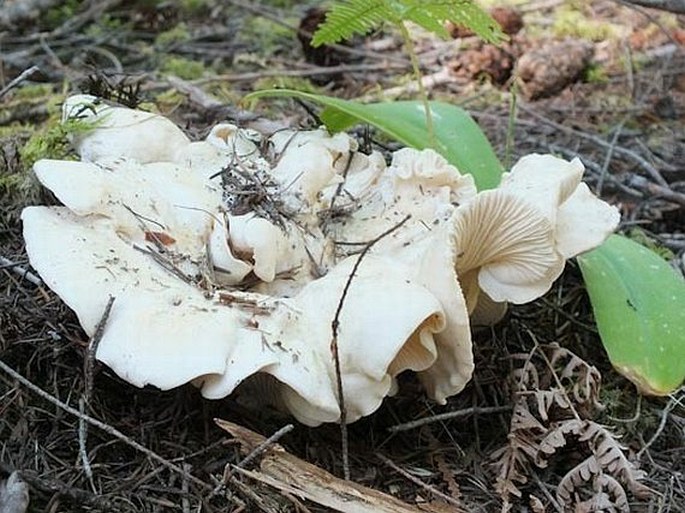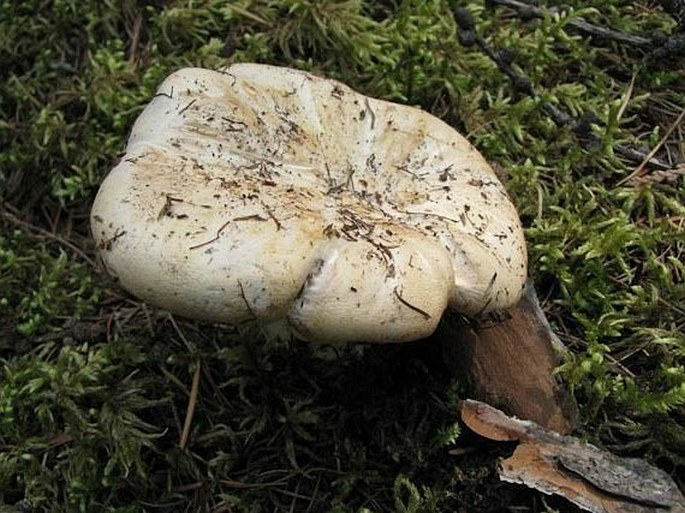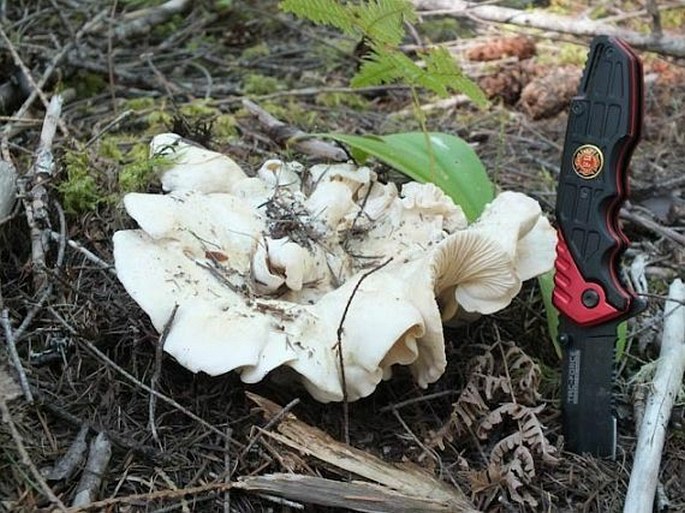Family: Cantharellaceae J. Schröt.

Distribution: The species of the Pacific Coast, from northern California to British Columbia.
Ecology: Found in coniferous and mixed forests, in growth of western American pines ( i. e. Pinus ponderosa), hemlocks (Tsuga heterophyla), and most of all, Douglas Fir (Pseudotsuga menziesii), but even deciduous madrone (Arbutus menziesii). Fruiting period is from August to November, depending on elevation.
Description: Cap 4–15 cm broad, plane to broadly depressed with often wavy or irregularly lobed margin, dull white, bruising orange yellow. Fertile surface (underside) with thick, firm, white, well spaced, deeply decurrent foldlike gills, dull white to pinkish. Stalk 2–7 cm long, 1–5 cm thick, equal or tapered downward, firm smooth, whitish. Spore print is white; spores elliptical, smooth.
Usage: Edible and choice, rarely wormy. Freezes well for future use.
Note: Frequent host of Hypomyces lactifluorum, which makes it still edible and for some people excellent.



These images were taken in Canada, British Columbia, Burton (September 2012 and 2013).


